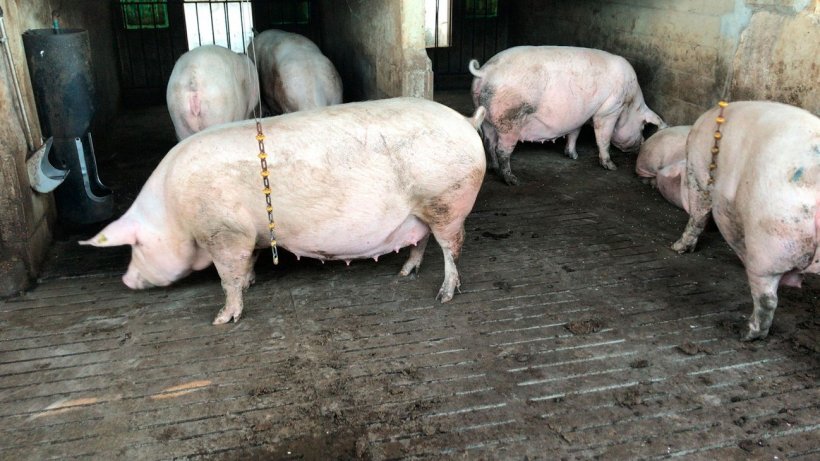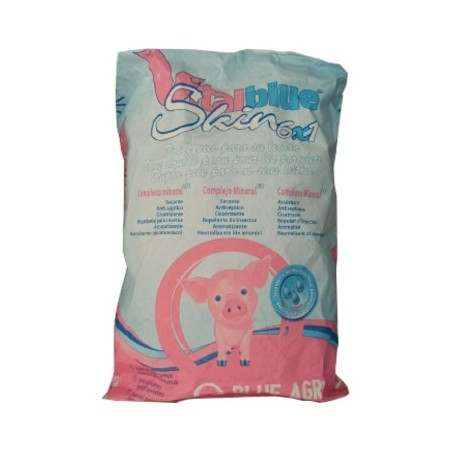Vaccination against E.coli and Clostridium perfringens C
According to all four experts, the use of E. coli and C. perfringens C bacterins is widespread in all countries and is considered one of the indispensable elements in terms of prevention.

Cantín points out an interesting detail: Traditionally, gilts were vaccinated and revaccinated at 60-80 days of gestation, and the multiparous sows were given a booster dose every cycle at 80 days of gestation, but I also recommend vaccinating and revaccinating the second parity sows in their second gestation. Many farms see diarrhea problems improve.

The range of possibilities and opinions expands when we talk about the rest of the pathogens that cause neonatal diarrhea, since autogenous vaccines (autovaccines) or other options must be used, since in most cases there are no commercial vaccines.
Preventing diarrhea caused by Rotavirus
As we saw in the first article, Rotavirus is one of the principal causative agents.
According to Ackerman, the situation in the US is different from that of other countries because they have more vaccination options for this disease. They have commercial vaccines for Rotavirus A, and they can also use vaccines that are not technically autovaccines, but rather are made with particle replication technology. In his experience, 20-25% of his customers use this type of vaccine with combinations of Rotavirus A+C and B+C.
Guedes tells us that in Brazil there are different commercial vaccine options for the prevention of Rotavirus A, but none for preventing Rotavirus C. When Rotavirus A has been diagnosed, using vaccines is a measure that works, but if the cause is Rotavirus C, one must use controlled oral exposure (COE).
Cantín tells us that in Spain there are no vaccines authorized for Rotavirus A but, with a special prescription, commercial vaccines imported from other countries can be used or even vaccines used for the prevention of Rotavirus in cattle, which give good results against Rotavirus A but not against C. In any case, when Rotavirus is a problem, COE is usually used.
Vraeghe also considers the bovine Rotavirus vaccine as an option in the absence of commercial vaccines, although many farms only use it in gilts. In Belgium, they also have the option of using autovaccines.
Autovaccines
Guedes tells us that they do not have commercial vaccines against C. difficile although, he explains, they are developing a vaccine against non-toxigenic C. difficile for newborn piglets; the results have been good in the tests done so far. Even so, he highlights that C. difficile regularly inhabits the piglet intestine, and the problems it causes have more to do with gut microbiota disorders, so he recommends using probiotics in piglets on the first and third days of life, as the toxin must be controlled by keeping the piglet's intestinal flora balanced.
Guedes is more skeptical with regards to autovaccines yielding good results in this case. Cantín agrees with Guedes, although the autovaccines have helped on some occasions, they have not been a definitive solution in his case. In his opinion, it often happens that they are started when a serious situation arises, but tend to be discontinued when the situation improves.
Ackerman says the use of autovaccines is widespread in the US, where there is no commercial vaccine for C. perfringens type A and autovaccines are used as prevention. Specifically, 50% of pig producers use an autovaccine to prevent C. perfringens type A, C. difficile, and also for pathogenic strains of E. coli that have been diagnosed and are not included in commercial vaccines.
He also points out that the use of vaccination strategies helps in making a more guided diagnosis, which is very important in implementing a treatment. As you establish a vaccination program, and with the history of the farm, the number of possible agents causing the pathology is reduced when you sample.
Vraeghe tells us about a similar use of autovaccines in the cases of C difficile. There is a commercial vaccine for C. perfringens A, but it does not always yield good results as it is often not the driving factor. This said: in some cases C. perfringens A vaccination solves the problem, as it shifts the balance in the right direction;. He again stresses: The first option is always an adequate vaccination against E. coli and Clostridium perfringens C with a commercial vaccine, as well as a review of the management, environmental, and hygiene factors, etc. that may be conducive to diarrhea. Only after this review, if diarrhea persists, we consider autovaccines or other strategies.
As we can see, vaccination options are very broad which is why, as discussed in the first article, making a proper diagnosis is essential (Figure 1).

In this article, controlled oral exposure has been mentioned several times. In the following article, we will discuss how to do it, when it can help us, and what precautions should be taken.






